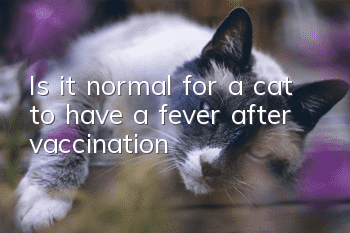What should I do if my cat eats a ribbon, rope or plastic bag? Attached first aid method

Trying to get your pet cat to behave can be harder than trying to control a toddler. No matter how many times you say "no" to them, no matter how many times you reward them for good behavior, sooner or later they will do something they shouldn't, go somewhere they shouldn't, or eat something they shouldn't. thing. Most of the time, you may only have to deal with a knocked over vase or knocked over plant. But sometimes, things can get serious quickly. Cats and dogs are known not to know the difference between edible and inedible foods. Take cats and ribbons. Cats dangled with a ribbon in front of them will often tap it lazily with their paws and will view it as prey, which will eventually be torn into pieces and eaten. If the worst thing it does is tear it, that's fine. But if your cat eats it, you need to take action. A kitten playing with a ball of yarn may be the definition of cute, but ribbons can be deadly to cats. String, dental floss, fishing line, Christmas tinsel, Easter grass, ribbons and any similar long thread-like items will work. So what do you do if your cat eats a ribbon, string, or plastic bag?
Sometimes it's easy to tell if your cat has eaten a ribbon. One minute you're dangling a piece of meat in front of them, and the next they're licking their lips and looking a little guilty. But how do you know if your cat ate some while you were away? Sometimes a look at their litter tray will reveal this. If there are no complications, the cat will digest the ribbon within 10 -24 hours without any problems. However, just seeing their ribbons doesn't mean it's out of the woods. Without knowing exactly how much ribbon a cat has eaten, it's impossible to know if they've overdosed or if they still have ribbons in their digestive system.
If you think your cat has eaten a ribbon, stay alert and pay attention to any warning signs. While symptoms can sometimes be attributed to completely unrelated issues, some of the most common signs that your cat has a belly full of ribbons include vomiting, fever, loss of appetite, bloody diarrhea, and abdominal pain. While cats will usually try to hide any signs of pain, you may notice that they become aggressive or start hiding when you pick them up. Symptoms usually appear within one to two days, depending on how much ribbon your cat has eaten and if and where it entered the digestive system.
What will happen if a cat eats a ribbon, string, or plastic bag?
Depending on the length and thickness of the ribbon, what starts as a minor incident can quickly develop into a life-threatening condition with what veterinarians call a linear foreign body. As the website cattime.com points out, threads form when one end of the ribbon gets stuck in a cat's digestive tract while the rest of the ribbon moves through the digestive tract.foreign body. When a cat's intestines try to pass the ribbon, the intestines become knotted. Not only can this result in a loss of blood supply to the "tied" area (which in turn can cause tissue death), in some cases the intestines can work so hard through the ribbons that it will eventually be enough to allow gastrointestinal waste to enter the abdominal cavity. If left untreated, this condition can quickly become fatal.
What should I do if my cat eats a ribbon, string, or plastic bag?
The first rule you should know about cats and ribbons is to never pull it out. If you see a thread sticking out of your cat's anus or mouth, you might think you're doing them a favor by letting it out. Actually not. If the ribbon is long, pulling on it can cause serious damage to your cat's gastrointestinal tract, or even lead to more disastrous consequences. If your cat allows it, try cutting the protruding cord as short as possible. Keep an eye on the cat until the entire ribbon is pulled out. If you are concerned that the ribbon is still trapped, or your cat starts to show any symptoms, seek emergency veterinary assistance.
How to treat it?
If you need to see a veterinarian, the first thing they will do is give you a physical exam and palpitations. If nature has taken its course and the cat has pulled the strings, that may be all that is needed. If the rope is not found and it is swallowed for a short period of time, they may cause vomiting. If there is still a chance that the ribbon is lodged in the cat's digestive tract, they may need to complete further procedures, such as X-rays or blood tests. If your veterinarian deems it necessary, an endoscopy (a non-surgical method of examining the digestive tract by inserting a tube with a camera through the mouth into the stomach under anesthesia) may be needed to determine next steps. step. If the endoscope successfully locates the ribbon, it can be safely removed while the cat is still anesthetized. The procedure is very safe and takes very little time—in most cases, as long as the veterinarian can wrap it up before the cat recovers from anesthesia. Surgery may be needed if the results of the endoscopy indicate the cat needs immediate intervention to prevent further damage or if the string was swallowed several days ago and your cat is already showing signs of illness.
Prevention is better than cure
Accidents happen, especially when pets are involved. But an ounce of caution can often prevent the worst from happening. Toys can provide hours of fun, but they can also be dangerous. Be sure to supervise play time, and remember to check that new toys are safe - if they have any dangling parts or look like they could be easily torn, be extra careful when letting your cat play with them while you're away. Obviously, any ribbon ball, string, dental flossor yarn should be kept away from the reach of little paws.
- What does it mean when a cat's tail twitches?
- Why is my cat so tired after taking a bath?
- What should cats pay attention to when changing their teeth?
- How to make cat food for cats of different ages
- Why do cats drool?
- What's wrong with the cat's paw pads?
- What should I do if I am bitten by a cat? Do I need an injection?
- Things to note when raising cats in summer
- What should you pay attention to when buying cat vaccines?
- What medicine should be used for kittens suffering from nasal congestion?



